Overview
In today's competitive landscape, many tech startups struggle with brand visibility and effective engagement. This challenge can often leave founders feeling overwhelmed and uncertain about how to connect with their target audience. The pain of being overlooked in a crowded market is all too familiar, and it can hinder growth and innovation.
However, there is hope. Retail media networks offer a pathway to enhance brand visibility and foster deeper engagement through targeted advertising strategies. By leveraging first-party data and innovative technology tools, startups can create personalized marketing campaigns that resonate with their audience. This approach not only strengthens customer connections but also opens up new avenues for revenue potential.
Consider the success stories of startups that have embraced these strategies; their journeys highlight the transformative power of tailored advertising. These case studies serve as a testament to the potential that lies within a well-executed marketing plan.
As you navigate this journey, remember that you are not alone. Embracing the right tools and strategies can empower your startup to thrive. Together, we can explore these opportunities and build a supportive community that champions your success.
Introduction
In a landscape where tech startups often face the daunting task of carving out their unique identity, retail media networks emerge as a powerful ally in the quest for visibility and engagement. These innovative platforms not only allow brands to connect with consumers at critical moments but also offer strategic advantages that can significantly enhance growth potential. Yet, the complexities of navigating this dynamic environment can feel overwhelming, raising pressing questions:
- How can startups effectively leverage retail media networks to overcome these challenges and unlock new opportunities?
This article delves into essential insights designed to empower tech entrepreneurs, helping them navigate the intricacies of retail media networks with confidence and creativity.
RNO1: Transforming Retail Media Networks with Innovative Branding Solutions
In today's rapidly evolving commercial media landscape, many tech startups grapple with the challenge of establishing a distinct brand identity. This struggle can often feel overwhelming, especially as competition intensifies. Without a captivating story or an engaging user experience, it becomes increasingly difficult for brands to connect with their target audience. At RNO1, we understand this pain and are here to help.
We focus on creating radical digital experiences that not only resonate with consumers but also foster meaningful connections. Our expertise in UX design, Web & App Development, and performance marketing ensures that tech startups can effectively capture consumer attention and enhance engagement. We believe that every brand has a unique story to tell, and we are committed to helping you share yours in a way that truly resonates.
Moreover, our dedication to SEO Strategy & Systems further amplifies your brand's visibility, making it easier for consumers to find and connect with you. By leveraging user-centric strategies and focusing on rapid ROI generation, RNO1 positions itself as a collaborative partner in your digital growth journey. We are proud to pioneer transformative solutions that have been successfully showcased in our featured case studies.
Together, let's navigate this competitive landscape and create a brand identity that stands out. We invite you to share your experiences and challenges with us; we are here to listen and every step of the way.
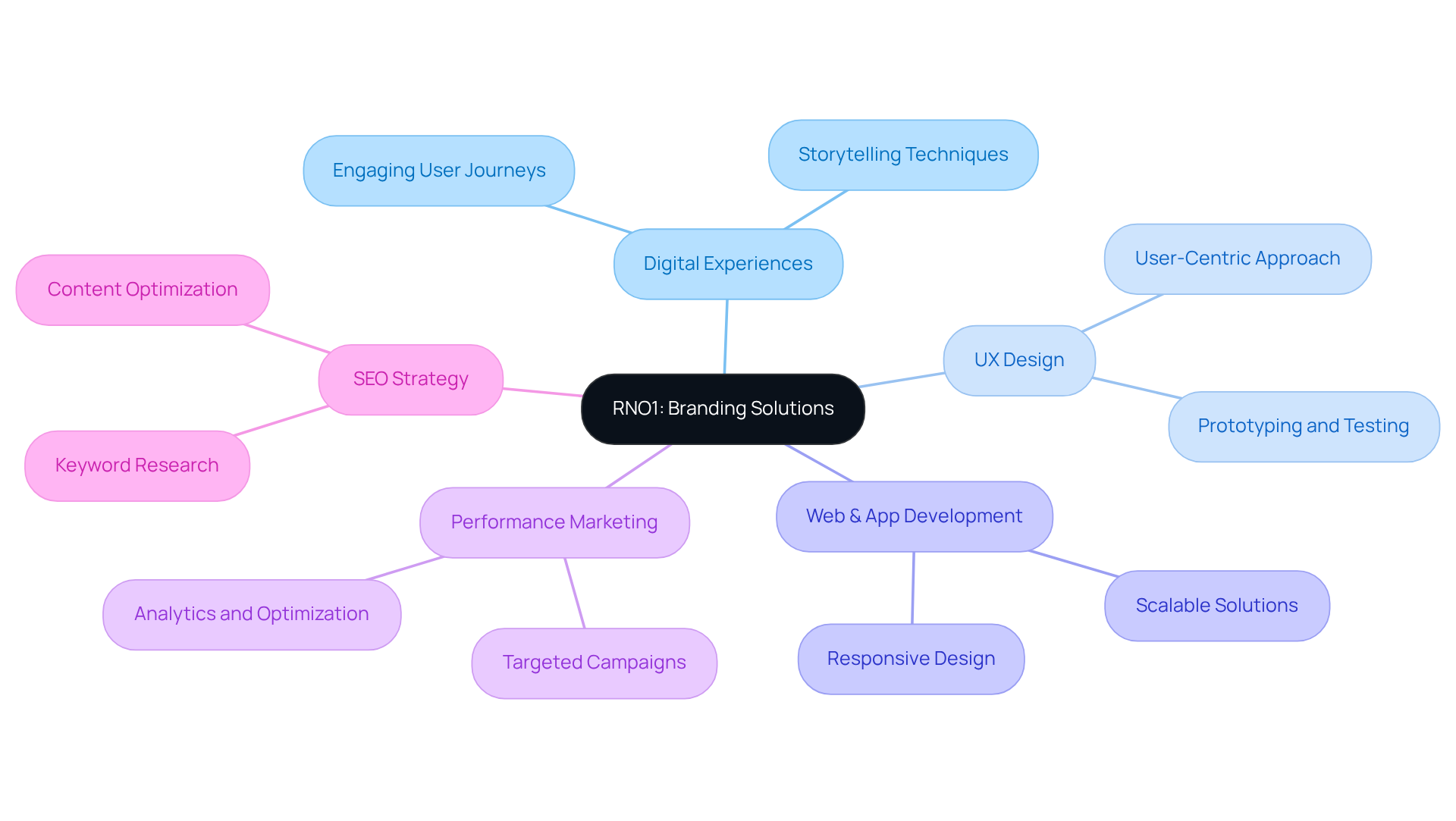
Definition of Retail Media Networks: Understanding the Concept
In today's competitive landscape, many brands struggle to connect with consumers at the right moment. This challenge can be particularly daunting for tech startups, who often feel overwhelmed by the complexities of advertising. The pain point here is clear: without effective strategies, valuable products may go unnoticed, leading to missed opportunities for growth and engagement.
However, there's hope. Advertising platforms, particularly retail media networks, can be a game changer, allowing brands to showcase their products directly within shopping environments, both online and offline. By leveraging the retailer's digital resources—such as websites, apps, and in-store displays—retail media networks provide targeted advertising that reaches consumers precisely when they're ready to make a purchase. This integration of retail media networks and shopping creates a unique opportunity for brands to connect with consumers at the point of sale, significantly increasing the likelihood of conversion.
Understanding this approach is essential for tech startups eager to navigate the complexities of the market. By embracing these systems, you can enhance your visibility and foster meaningful connections with your audience. Remember, you're not alone in this journey; many have walked this path and found success. With the right tools and support, your brand can .
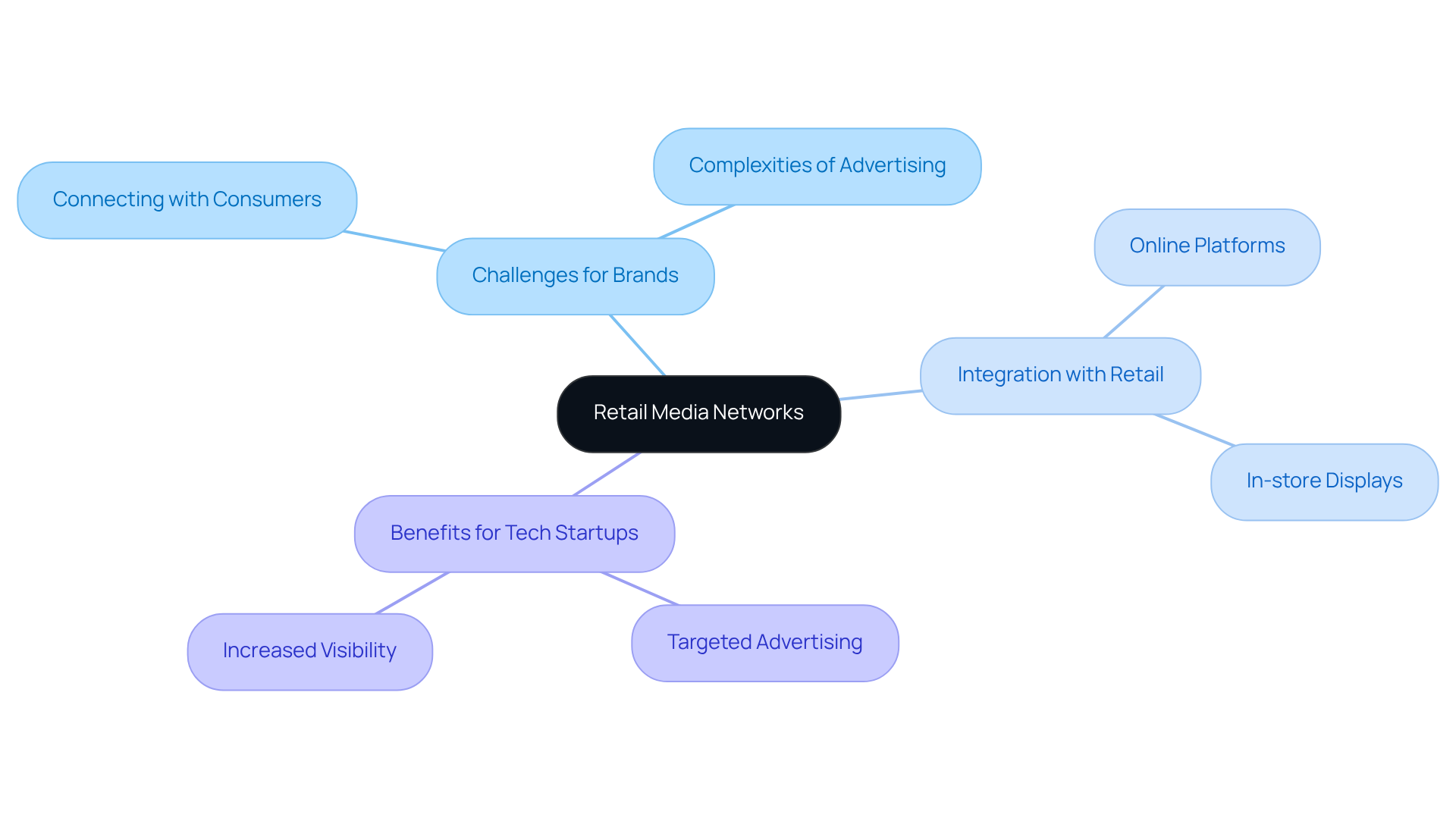
Growth Drivers of Retail Media Networks: Key Market Trends
In today’s rapidly evolving landscape, many startups face the challenge of adapting to significant market trends that are reshaping commercial media systems. The shift towards eCommerce has created a pressing need for brands to connect with consumers online. This is where RNO1's Ryde initiative shines, offering scaled designed to meet this demand. As you navigate these changes, it’s crucial to recognize how this shift can feel overwhelming, yet it also presents a unique opportunity for growth and connection.
Moreover, the increasing importance of data-driven marketing allows brands to engage specific audiences more effectively. RNO1’s strategies for influencer partnerships leverage first-party data, providing a solution that not only addresses the challenges of targeting but also empowers you to connect with your audience meaningfully. It’s natural to feel uncertain about how to harness this data, but with the right support, you can turn this into a powerful asset.
Additionally, the rise of omnichannel shopping experiences means consumers now expect seamless interactions across various platforms. RNO1 understands this need and has developed community engagement strategies that prioritize these seamless connections. It’s easy to feel lost in this complexity, but remember, you’re not alone in this journey—RNO1 is here to guide you.
Lastly, the growing emphasis on first-party data collection enables brands to craft personalized advertising strategies that truly resonate with consumers. RNO1 supports this through its influencer onboarding strategies and gamification of affiliate programs, making it easier for you to create meaningful connections. As a startup, staying attuned to these trends is vital for leveraging the opportunities presented by retail media networks. By embracing these changes with RNO1’s support, you can navigate this landscape with confidence and compassion.
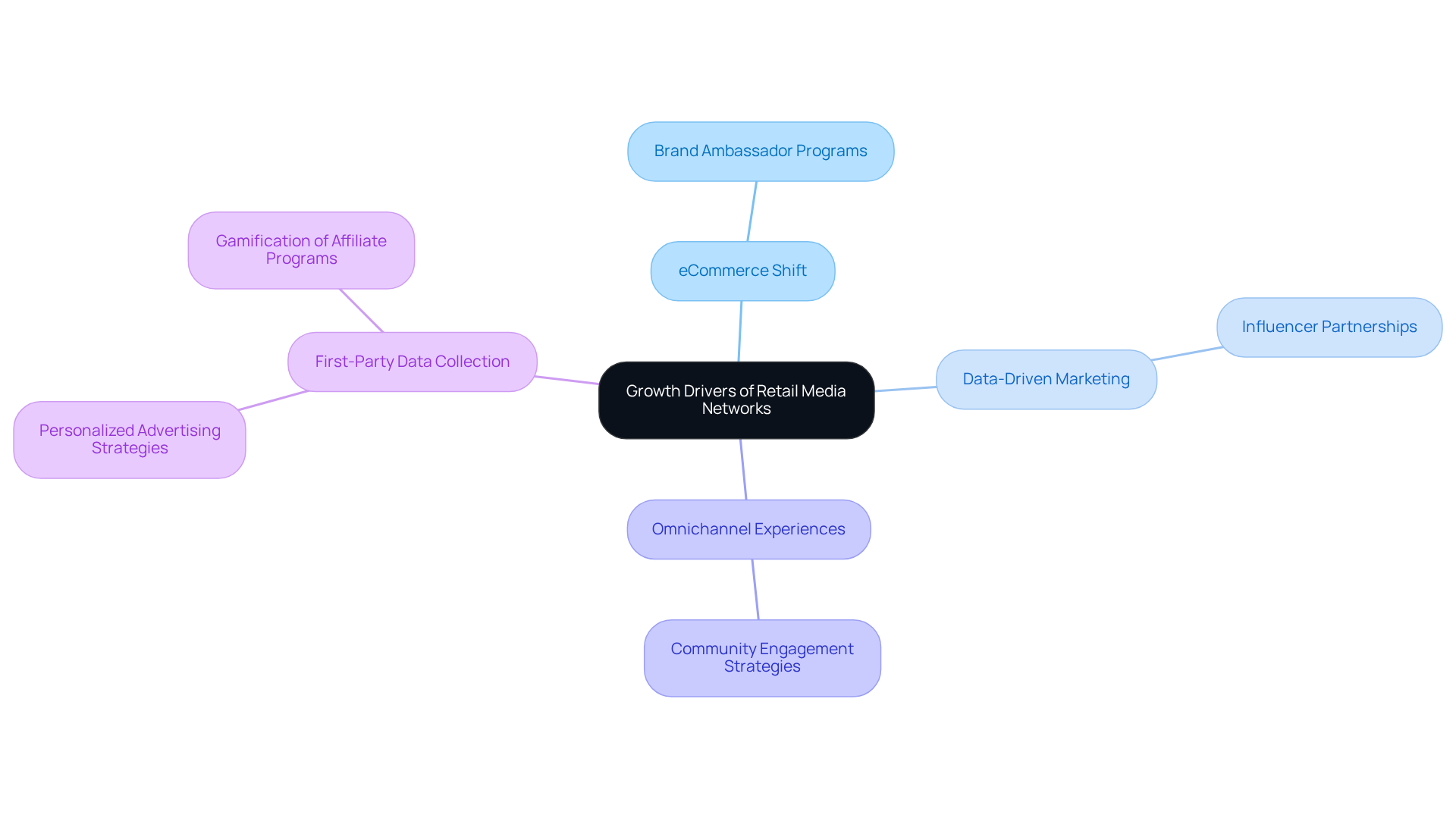
Opportunities in Retail Media Networks: Unlocking Revenue Potential
Many tech startups grapple with the challenge of accessing revenue potential in a competitive landscape. This struggle can feel overwhelming, especially when trying to stand out amid established players. However, retail media networks present a nurturing opportunity for growth. By partnering with established retailers and leveraging retail media networks, startups can tap into a vast audience, significantly enhancing their brand visibility.
Take, for instance, RNO1's collaboration with Cirkul. Their performance marketing expertise shines through in this case study, revealing how effective digital growth strategies can truly drive engagement and sales. In fact, Cirkul experienced a remarkable 30% increase in customer engagement and a 25% boost in sales within just the first quarter of implementation. This success story illustrates the potential for startups to thrive when they leverage the right strategies.
Moreover, these platforms allow for creative advertising formats, such as shoppable ads and sponsored content, which can lead to increased engagement rates. Startups can also explore affiliate marketing opportunities within retail media networks, creating additional revenue streams through performance-driven advertising. By thoughtfully positioning themselves within these systems, new businesses can significantly enhance their revenue potential.
Ultimately, the journey may seem daunting, but with the , tech startups can navigate these challenges and flourish. RNO1 is here to help, providing the expertise and nurturing environment that founders need to succeed.
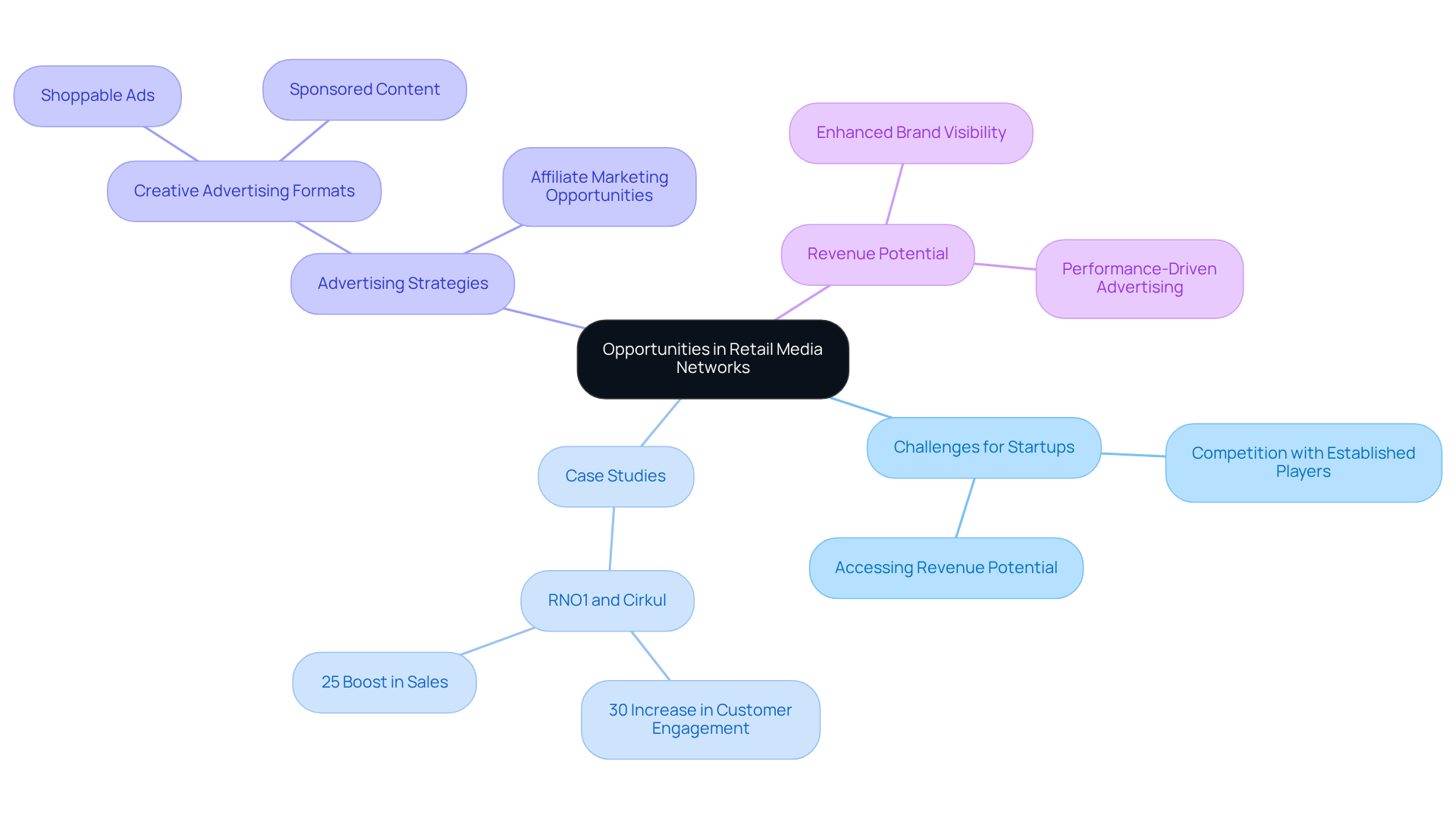
First-Party Data: The Backbone of Effective Retail Media Networks
Navigating the complexities of consumer behavior can be a daunting challenge for brands. Many struggle to connect with their audience, often feeling lost in the vast sea of data available. This disconnect can lead to missed opportunities and frustration, as brands aim to create meaningful connections.
First-party data, which is the information collected directly from consumers—like purchase history, browsing behavior, and demographic details—offers a path forward. By leveraging this valuable resource, brands can craft targeted promotional campaigns that resonate deeply with their audience. Imagine being able to understand your customers' preferences and behaviors more clearly; this insight can transform your marketing initiatives into personalized experiences that truly engage.
When technology companies utilize first-party data effectively, they not only enhance their understanding of consumer needs but also foster . This makes first-party data an invaluable asset within retail media networks. We encourage you to explore how embracing this approach can help you connect with your audience in a more meaningful way, turning challenges into opportunities for growth and success.
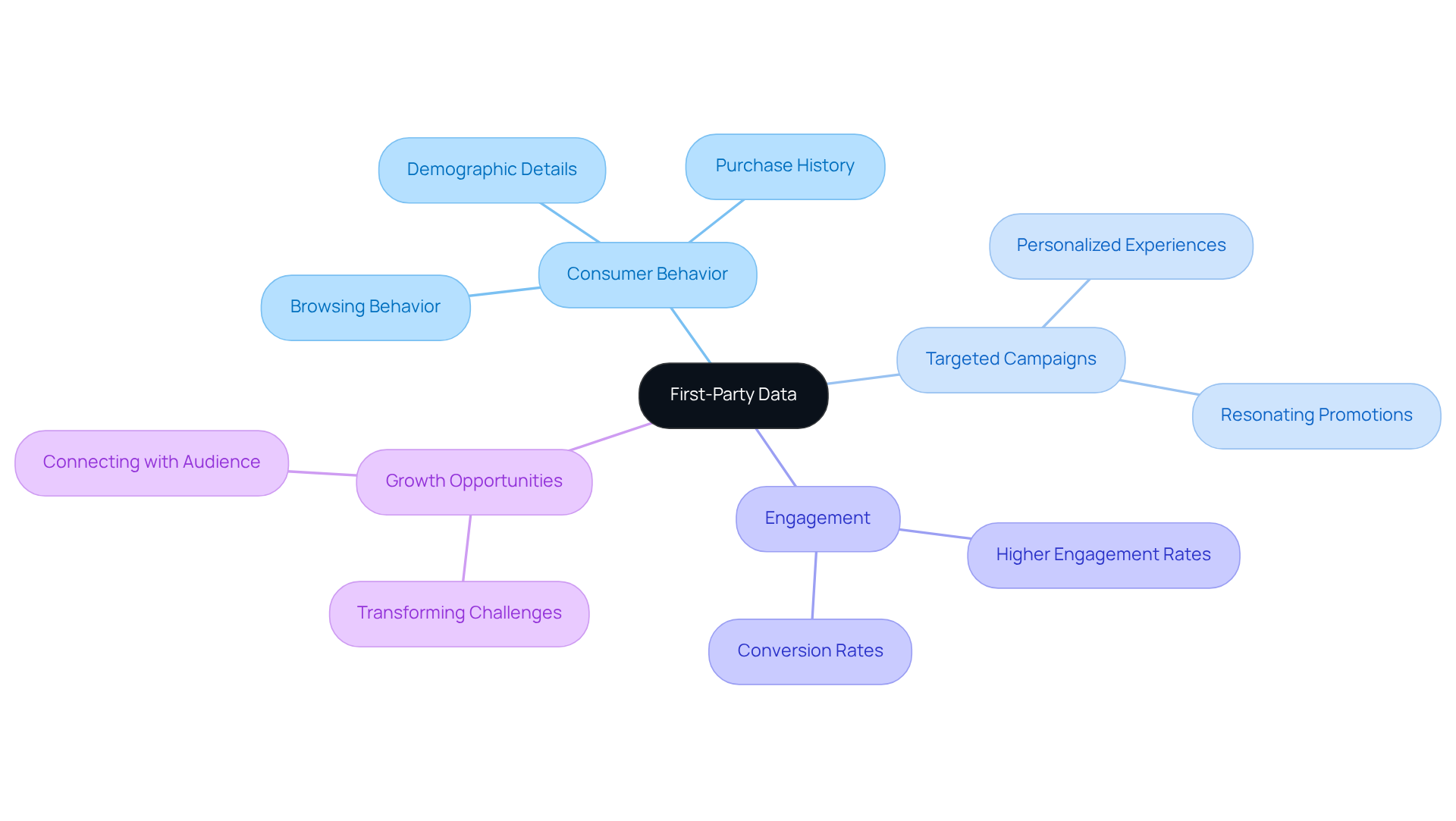
Activating First-Party Data: Strategies for Success
Activating first-party data can be a daunting task for technology companies, often leaving founders feeling overwhelmed. The challenge lies in efficiently managing vast amounts of data, which can feel like an insurmountable hurdle. Without the right strategies, businesses may struggle to connect with their audience effectively, leading to frustration and missed opportunities.
To navigate this complexity, it’s essential to invest in robust . These tools not only facilitate efficient data collection and storage but also empower you to analyze insights that can transform your marketing approach. Imagine the relief of having a streamlined process that allows you to focus on what truly matters—your customers.
Segmenting your audience based on behavior and preferences is another vital step. By understanding the unique needs of your audience, you can tailor your marketing efforts in a way that resonates deeply with them. This personalized approach fosters a connection that goes beyond mere transactions, nurturing relationships that can lead to lasting loyalty.
Additionally, utilizing advanced analytics tools can provide you with invaluable insights into consumer behavior. These insights help refine your advertising strategies, allowing you to reach your audience more effectively. Think of it as having a guiding light that illuminates the path forward, helping you make informed decisions that align with your customers’ evolving needs.
Lastly, ongoing testing and optimization of your campaigns based on these data insights will ensure that your business can adapt to changing consumer preferences. This flexibility not only maximizes your advertising effectiveness but also demonstrates your commitment to understanding and serving your audience. Remember, you’re not alone in this journey—embracing these strategies can lead to a more fulfilling and successful experience in the ever-evolving tech landscape.
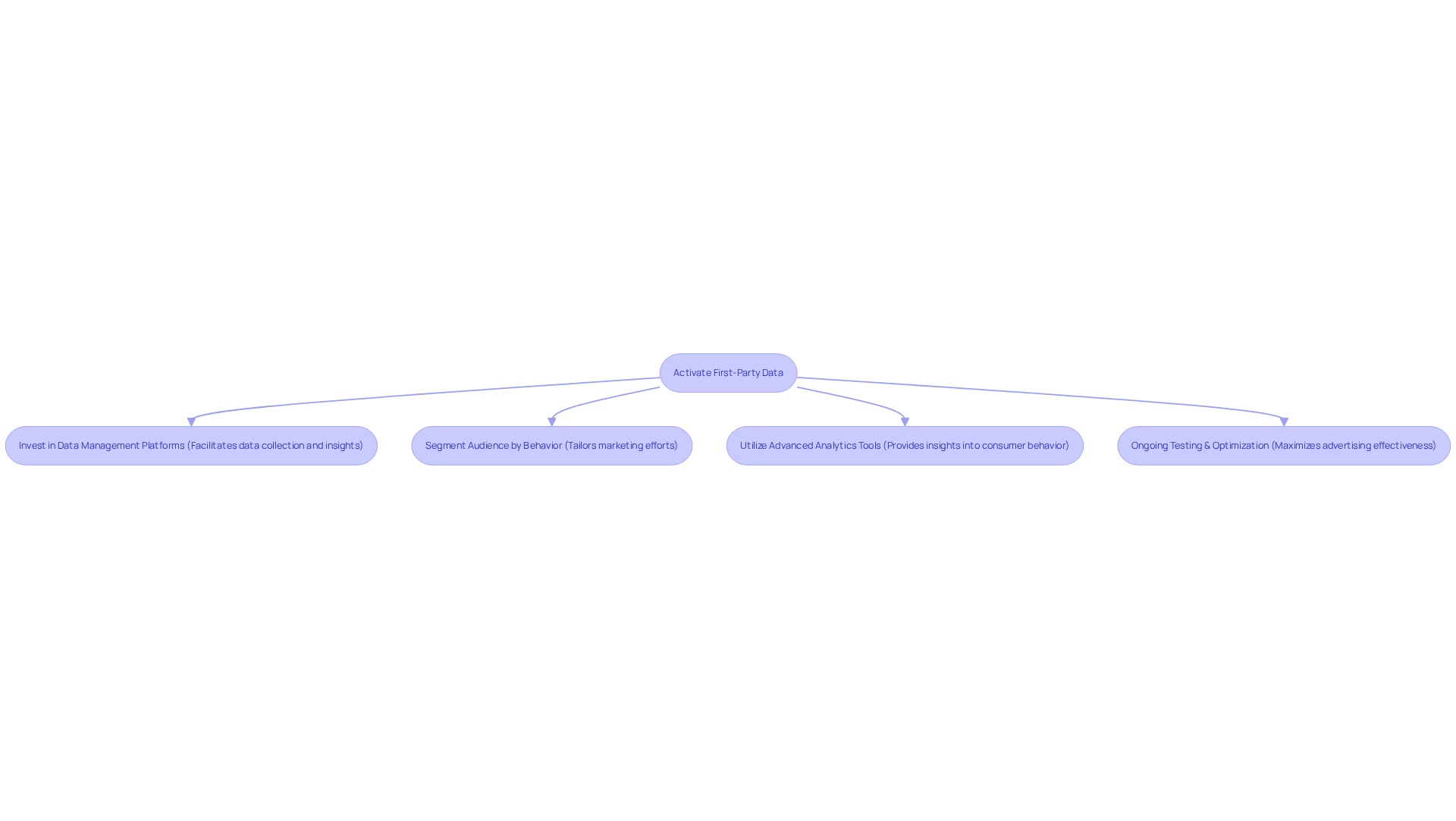
Audience Insights: Leveraging First-Party Data for Better Engagement
Understanding how to effectively engage audiences is a common challenge for technology firms navigating the complexities of commerce platforms. Many new businesses find themselves grappling with the intricacies of consumer behavior, which can feel overwhelming. This struggle often leads to missed opportunities to connect with potential customers, leaving founders feeling frustrated and uncertain about their marketing strategies.
By utilizing first-party data, startups can uncover valuable audience insights that illuminate trends and preferences. This deeper understanding allows them to create personalized content that truly resonates with their target audience, fostering a sense of connection and leading to higher engagement rates. Imagine crafting messages that speak directly to the hearts of your consumers, making them feel seen and valued.
Moreover, leveraging these insights can significantly enhance advertising positions within retail media networks. It ensures that your messages reach the right consumers at the perfect moment, transforming the way you engage with your audience. This thoughtful approach to audience involvement is not just a strategy; it’s a pathway to success in commerce. Remember, you’re not alone in this journey. With the right tools and insights, you can that drive your business forward.
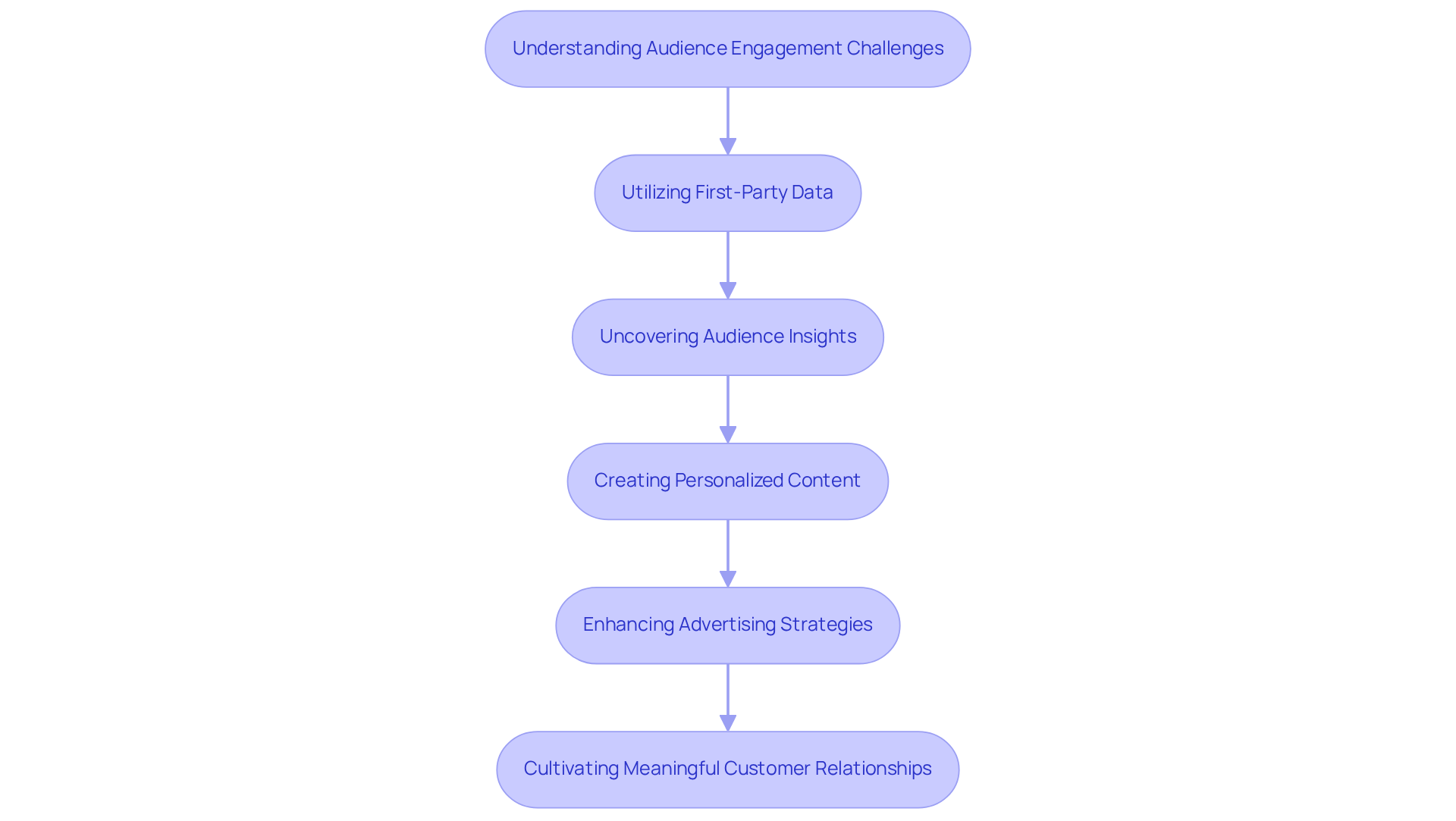
Technology in Retail Media Networks: Tools for Implementation
Many startups today face the daunting challenge of effectively executing commercial media systems, a task that heavily relies on technology. This can often feel overwhelming, as navigating the landscape of tools for data collection, audience segmentation, and campaign management can be quite complex. It’s important to recognize that without the right support, these challenges can lead to frustration and hinder growth.
For instance, Customer Relationship Management (CRM) systems can be a lifeline, helping to manage customer data effectively. Imagine being able to streamline your processes and truly understand your audience’s needs. Additionally, programmatic advertising platforms can alleviate the stress of ad placements, automating them based on real-time data. This not only saves time but also enhances the precision of your campaigns.
Moreover, are not just technical jargon; they are essential companions in measuring campaign performance and optimizing strategies. By embracing these technologies, you can transform your media initiatives, ultimately improving your overall efficiency. Remember, you’re not alone in this journey. Many have walked this path and found success by leveraging the right tools. By exploring these options, you can foster a more nurturing environment for your startup, paving the way for growth and innovation.
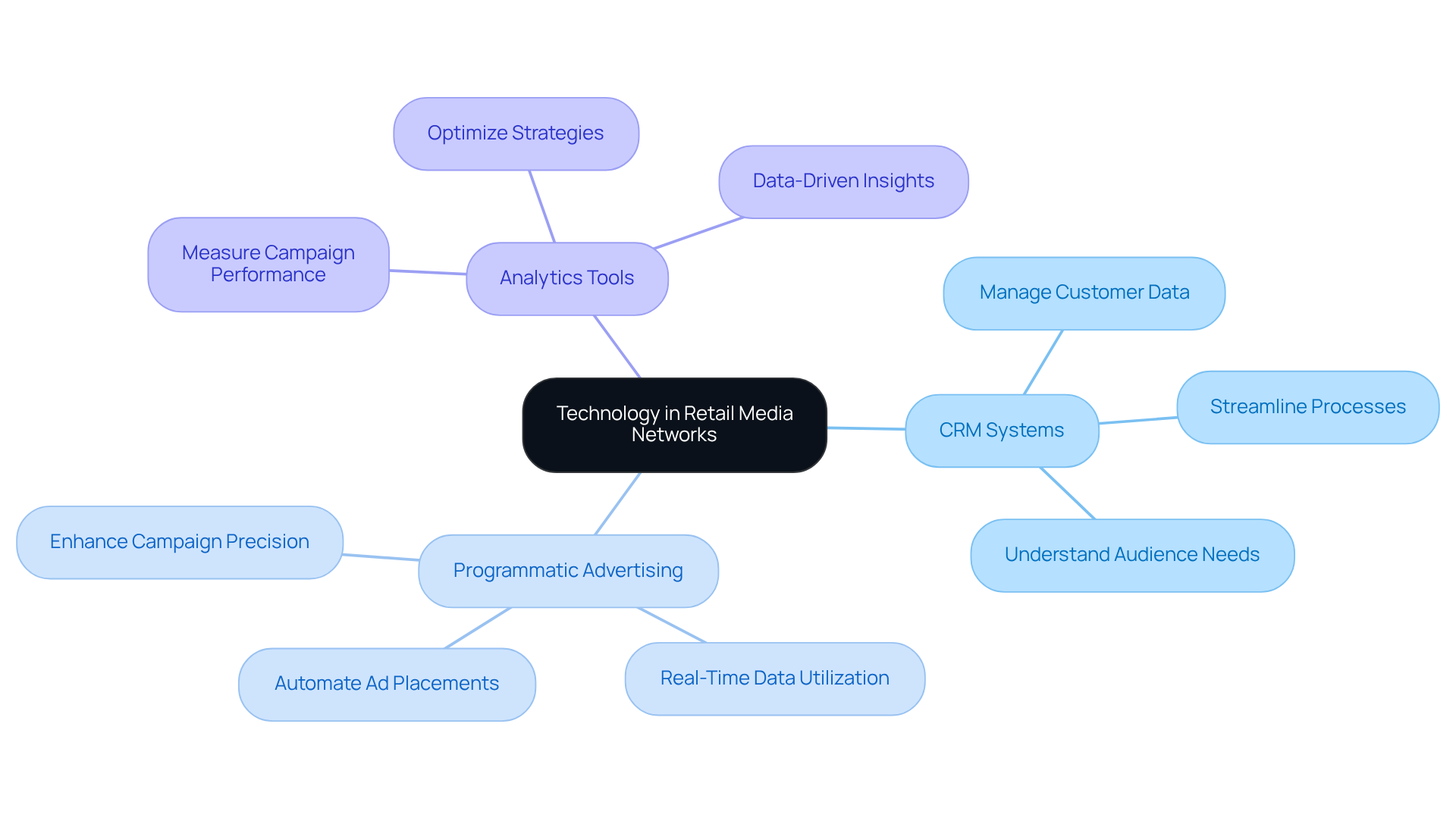
Management and Operations: Best Practices for Retail Media Networks
Managing commercial media systems can be a daunting challenge for new ventures. Many founders find themselves overwhelmed, unsure of how to effectively measure success and align their strategies with business goals. This uncertainty can lead to frustration and missed opportunities. However, there are best practices that can help alleviate these concerns.
- Establishing clear objectives and KPIs for campaigns is essential. This not only helps measure success but also provides a roadmap for navigating the complexities of media systems.
- Additionally, fostering collaboration between marketing and sales teams ensures that messaging remains consistent and aligned with overarching business goals. When everyone is on the same page, it creates a unified front that can significantly enhance impact.
- Regular , coupled with modifications based on data insights, allow new businesses to stay agile and responsive to the ever-changing market landscape. This adaptability is crucial for survival and growth.
- Moreover, investing in continuous training and development for team members equips them with the latest knowledge and skills, enabling them to confidently navigate the evolving environment of media platforms.
By embracing these practices, tech startup founders can foster a nurturing environment that not only supports their teams but also drives success. Remember, you’re not alone in this journey—many have walked this path and emerged stronger. Together, we can create a community that uplifts and empowers each other.
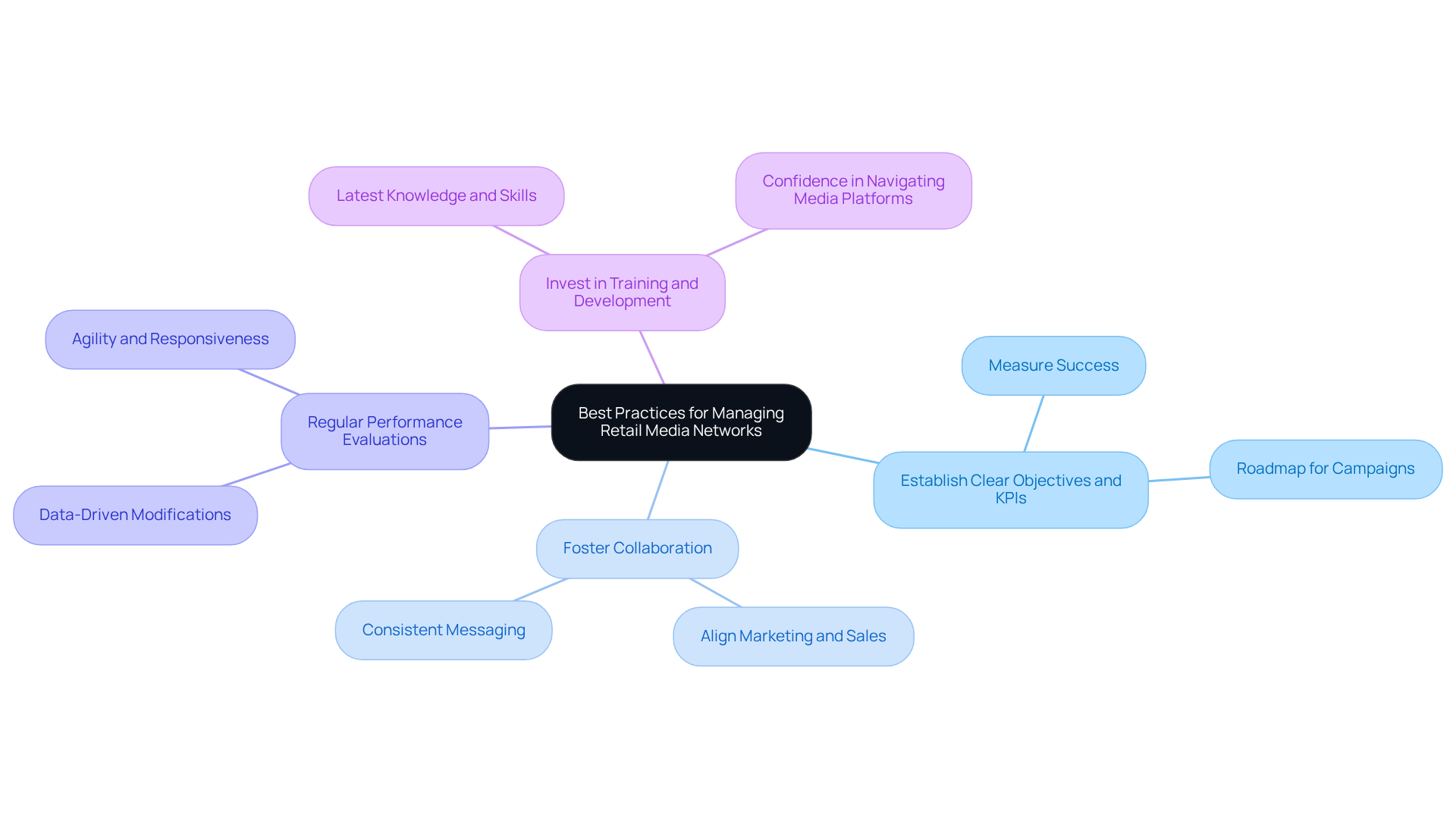
Key Takeaways: Essential Insights on Retail Media Networks
In conclusion, many tech startups face the challenge of effectively branding and marketing themselves in a crowded space. This can be daunting, as the landscape of commercial media platforms seems overwhelming at times. However, by understanding these systems and recognizing the key factors that drive growth, you can harness the power of first-party data to craft advertising strategies that truly resonate with your audience.
Implementing the right technology tools and adhering to best practices in management can significantly enhance your efforts. Remember, you are not alone in this journey. The insights shared in this article serve as a supportive roadmap for tech startups eager to thrive in the ever-evolving landscape of retail media networks. Together, we can navigate these challenges and unlock .
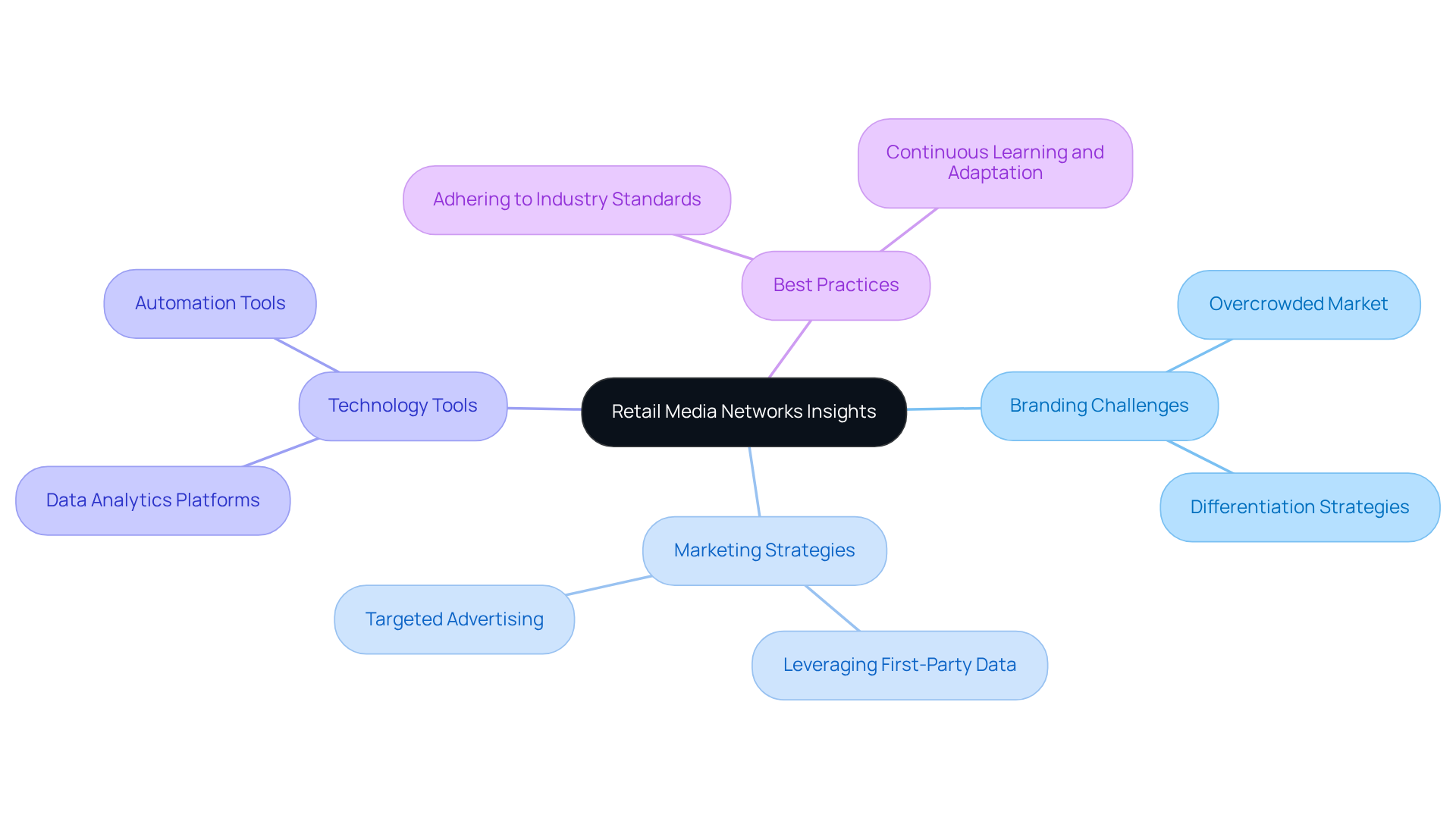
Conclusion
Many tech startups find themselves navigating the challenging waters of retail media networks, striving to carve out a distinct identity in a competitive market. This journey can often feel overwhelming, as the quest for visibility and connection with their audience weighs heavily on their minds. However, by embracing innovative branding solutions and leveraging first-party data, these startups can forge deeper connections and enhance their presence in the marketplace. The insights shared throughout this article underscore the importance of understanding retail media networks as a powerful tool for growth and engagement.
The key arguments presented reveal the transformative potential of retail media networks, highlighting the necessity of utilizing first-party data for personalized marketing. Furthermore, the benefits of adopting technology tools for effective campaign management cannot be overstated. By following best practices and focusing on collaboration, startups can unlock significant revenue opportunities and foster lasting relationships with their consumers.
Ultimately, while the journey through retail media networks may seem daunting, it is essential to remember that with the right strategies and support, tech startups can truly thrive. Remaining proactive, continually adapting to market trends, and leveraging the insights gained from this article are crucial steps. By doing so, new ventures can not only navigate the complexities of retail media networks but also position themselves for sustained success in the evolving commercial landscape. Together, we can embrace these challenges and celebrate the victories that lie ahead.
Frequently Asked Questions
What is RNO1 and what services do they offer?
RNO1 is a company that helps tech startups establish a distinct brand identity through innovative digital experiences. They specialize in UX design, Web & App Development, performance marketing, and SEO Strategy & Systems to enhance consumer engagement and brand visibility.
What are retail media networks?
Retail media networks are advertising platforms that allow brands to showcase their products directly within shopping environments, both online and offline. They leverage a retailer's digital resources, such as websites, apps, and in-store displays, to provide targeted advertising at the point of sale, increasing the likelihood of conversion.
How can retail media networks benefit tech startups?
Retail media networks help tech startups connect with consumers at the right moment, enhancing visibility and fostering meaningful connections. By utilizing these networks, startups can effectively showcase their products, leading to increased engagement and potential growth opportunities.
What are the key market trends affecting retail media networks?
Key market trends include the shift towards eCommerce, the importance of data-driven marketing, the rise of omnichannel shopping experiences, and the emphasis on first-party data collection. These trends create opportunities for brands to connect with consumers more effectively.
How does RNO1 support brands in navigating market trends?
RNO1 offers solutions like the Ryde initiative, which provides omnichannel brand ambassador programs, and strategies for influencer partnerships that leverage first-party data. They also develop community engagement strategies to ensure seamless consumer interactions across various platforms.
What is the significance of first-party data in retail media networks?
First-party data is crucial for crafting personalized advertising strategies that resonate with consumers. RNO1 supports brands in collecting and utilizing this data to create meaningful connections and enhance marketing effectiveness.
How can startups benefit from working with RNO1?
Startups can benefit from RNO1's expertise in creating engaging user experiences, enhancing brand visibility, and navigating the complexities of the market. RNO1 acts as a collaborative partner, providing support and strategies to help startups thrive in a competitive landscape.




